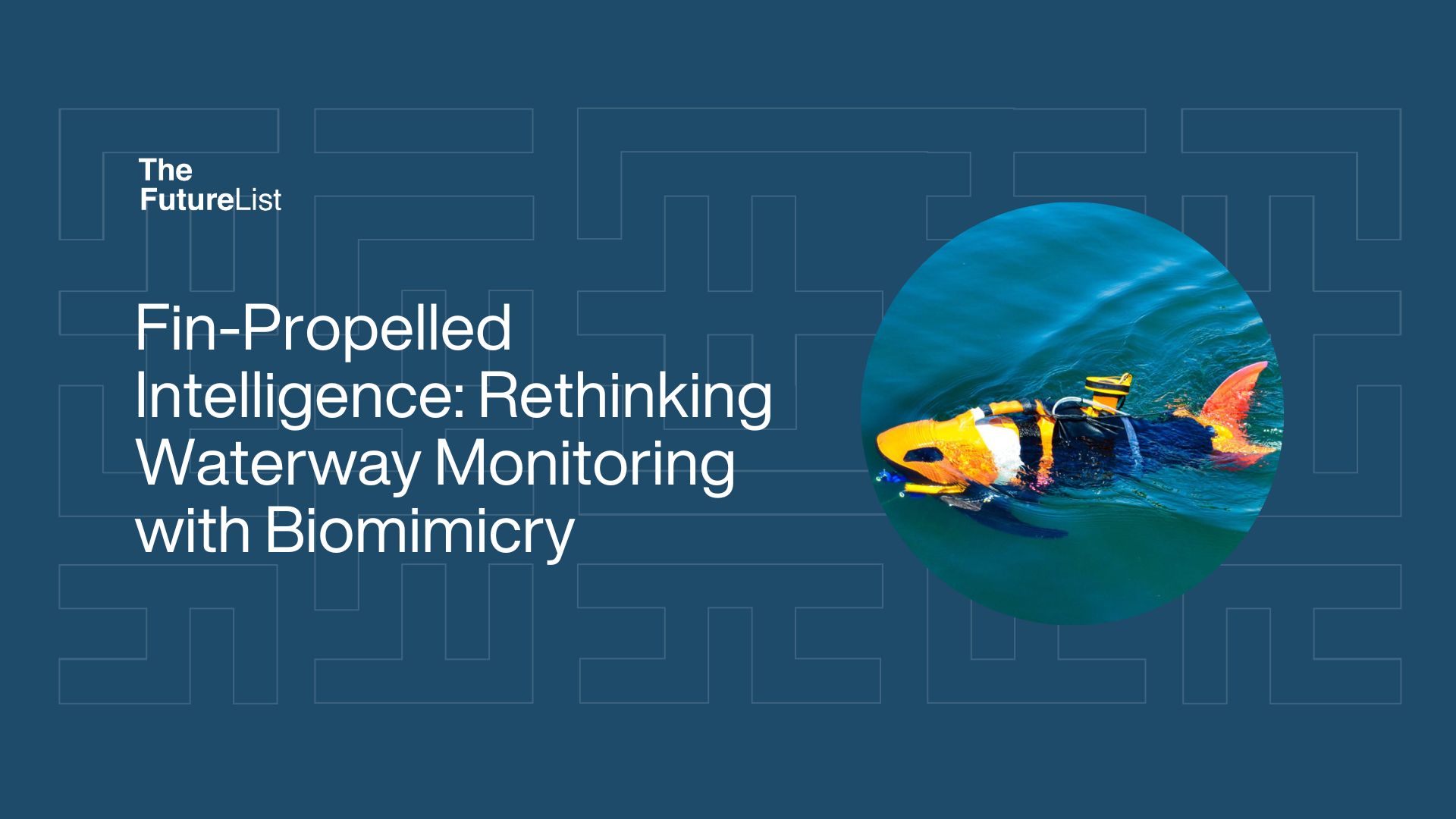
Fin-Propelled Intelligence: Rethinking Waterway Monitoring with Biomimicry
By Eric Kamande
Harnessing Nature’s Design
Engineers have long looked to the natural world for inspiration. Biomimicry, the practice of emulating biological forms and processes, has driven breakthroughs from Velcro to whale-inspired turbine blades. Beneath the waves, fish locomotion offers a blueprint for creating underwater robots that swim efficiently, navigate complex environments, and blend seamlessly into aquatic ecosystems. By mimicking the fin-and-tail movements of real fish, these devices can travel farther on a single battery charge, maneuver through tight spaces like under piers or within aquaculture pens, and collect data without disturbing marine life.
Bridging the Data Gap Beneath the Surface
Although water covers 70% of the Earth’s surface, continuous monitoring of rivers, lakes, and coastal zones remains sporadic. Diver surveys and fixed probes deliver valuable snapshots but leave vast areas unmonitored, and more than 80% of the world’s wastewater goes untreated. Climate change, coastal development, and growing pollution demand real-time, high-resolution insights. Yet water-tech attracts less than 3% of global climate-tech funding, underscoring an urgent need for scalable sensing solutions that deliver continuous data while keeping costs and ecological impacts low.
Aquaai’s Fish as a Service Model
Founded in California in 2020 by Simeon Pieterkosky and Liane Thompson, and now headquartered in Abu Dhabi, Aquaai delivers underwater intelligence through a subscription-style platform it calls “Fish as a Service.” The company combines three core elements:
- Biomimetic Propulsion: Each autonomous underwater vehicle measures roughly 1.3 meters long and employs a flexible, 3d-printed fin propulsion system. By emulating a fish’s swimming motion, these AUVs use up to 50% less energy than traditional propeller-driven robots and can remain in the water for over eight hours.
- Modular Sensor Payloads: A single AUV can be reconfigured on-site to carry a variety of sensors, measuring pH, dissolved oxygen, salinity, turbidity, or acoustic noise, and high-definition cameras. This plug-and-play approach lets one robot serve aquaculture operators, port authorities, and environmental agencies alike without large hardware investments.
- Cloud-Native Analytics: Live data streams feed into Aquaai’s web dashboard, where machine-learning models flag anomalies, such as sudden salinity shifts or early signs of biofouling, and generate geospatial reports. Automated alerts empower rapid interventions, reducing reliance on manual sampling and periodic surveys.
Real-World Impact
Aquaai’s biomimetic AUVs are already transforming how industries manage waterways:
- Aquaculture: Salmon farms in Norway and California use fleets of AUVs to patrol pens continuously, tracking fish behaviour, feed distribution, and water chemistry. Early deployments have cut feed waste by 25% and detected oxygen drops hours before they would have been noticed by fixed probes.
- Infrastructure Inspection: Port operators deploy the fish-like drones to inspect hulls, pilings, and submerged structures. The robots map 3D surfaces and pinpoint areas of corrosion or marine growth, slashing dive-time costs by up to 40%.
- Water-Quality and Flood Monitoring: In the Middle East, home to just % of the world’s freshwater, municipalities use AUVs to survey dams, canals, and rivers. Real-time maps of pollutants and debris guide emergency responses during seasonal floods and support compliance with evolving regulations.
Unlocking Market Demand
Regulatory frameworks such as the European Union’s Water Framework Directive and California’s stormwater mandates increasingly demand continuous, spatially detailed water-quality reporting. Building thousands of fixed sensor stations would require prohibitive capital. Aquaai’s subscription model lets agencies scale coverage on demand without heavy infrastructure outlays. The company’s recent $1.5 million funding round and acceptance into Abu Dhabi’s Hub71 accelerator underscore growing confidence that biomimetic underwater robotics can bridge the persistent data gap beneath the waves.
Looking Ahead
Underwater Internet of Things stands on the cusp of rapid growth. Advances in battery chemistry, acoustic communications, and edge computing will extend mission endurance and data throughput. For founders and ecosystem builders, Aquaai offers two clear lessons: nature’s designs can unlock performance gains that conventional engineering cannot match, and modular, cloud-native services can transform niche hardware into scalable platforms. By making ocean and freshwater environments continuously observable, innovators are charting a course toward safer waterways, healthier ecosystems, and a truly data-driven blue economy.
Get innovation insights from The FutureList weekly. Subscribe to our newsletter here
Categories
- Agritech
- Artificial Intelligence
- Biotech
- Blockchain
- Climate Tech
- Data Infrastructure
- Edtech
- Events
- Fashion
- Fintech
- Healthtech
- Infrastructure
- Innovation Memos
- Innovation Scout Program
- Insight
- Insurtech
- Machine Learning
- Martech
- Mobility
- Music and Media
- Partner Offers
- Perks
- Procurement
- Proptech
- Retailtech
- Ridehailing
- Ridesharing
- Robotics
- Space Aviation
- Supply Chain
- Talent
- Telecoms
- Uncategorized
- Venture Capital
- Wastetech
- Women In Tech
Recent Posts
- The Rural Health Operating System: Reinventing Access to Care in Africa
- Intelligent Grid Monitoring: How IoT and AI Are Powering the Future of Energy
- Innovation Memo with STEMAIDE: Hands-on STEM Education for Young Africans
- Transforming Health in Africa, One Project at a Time
- Smart People: A core pillar for Smart Cities